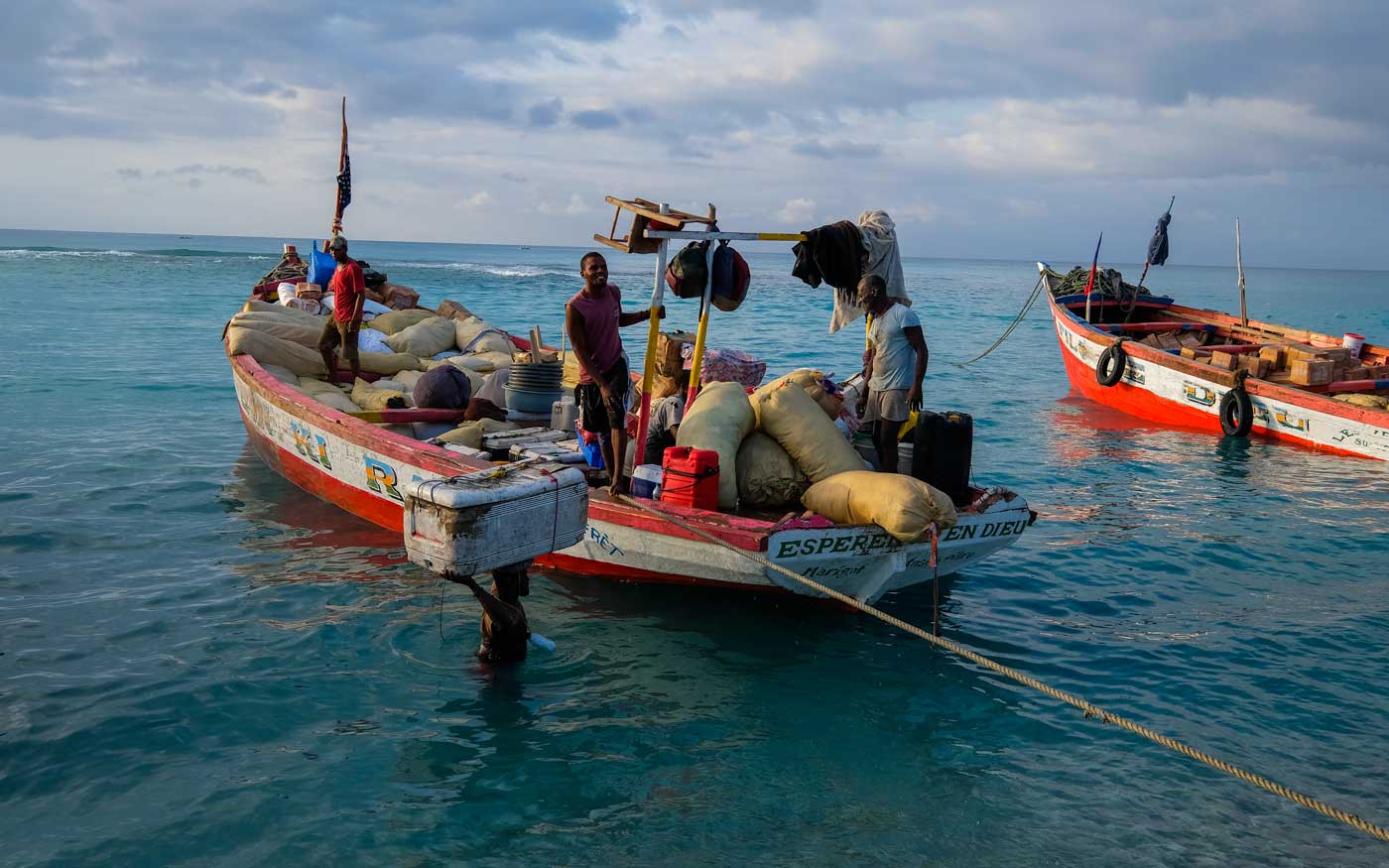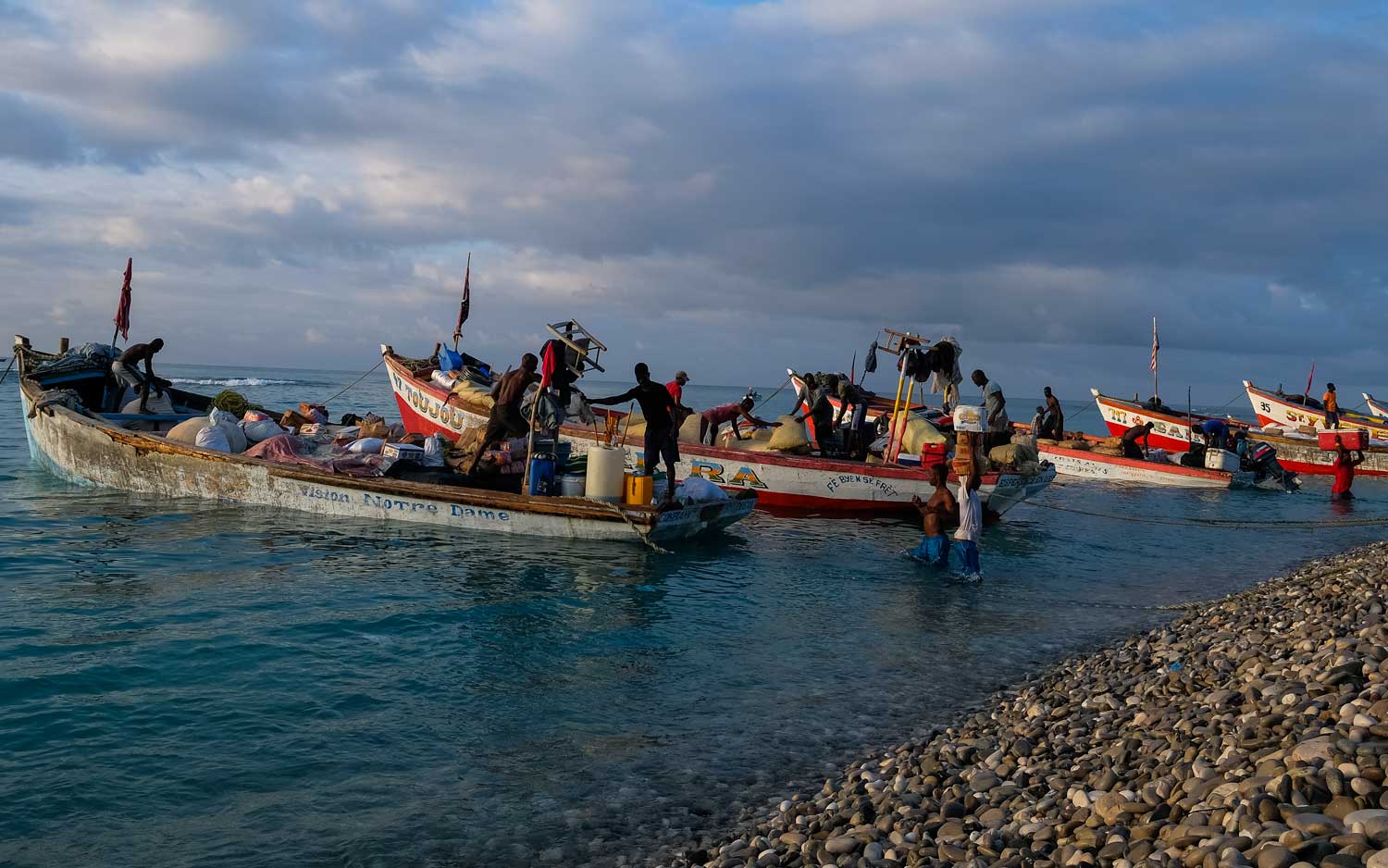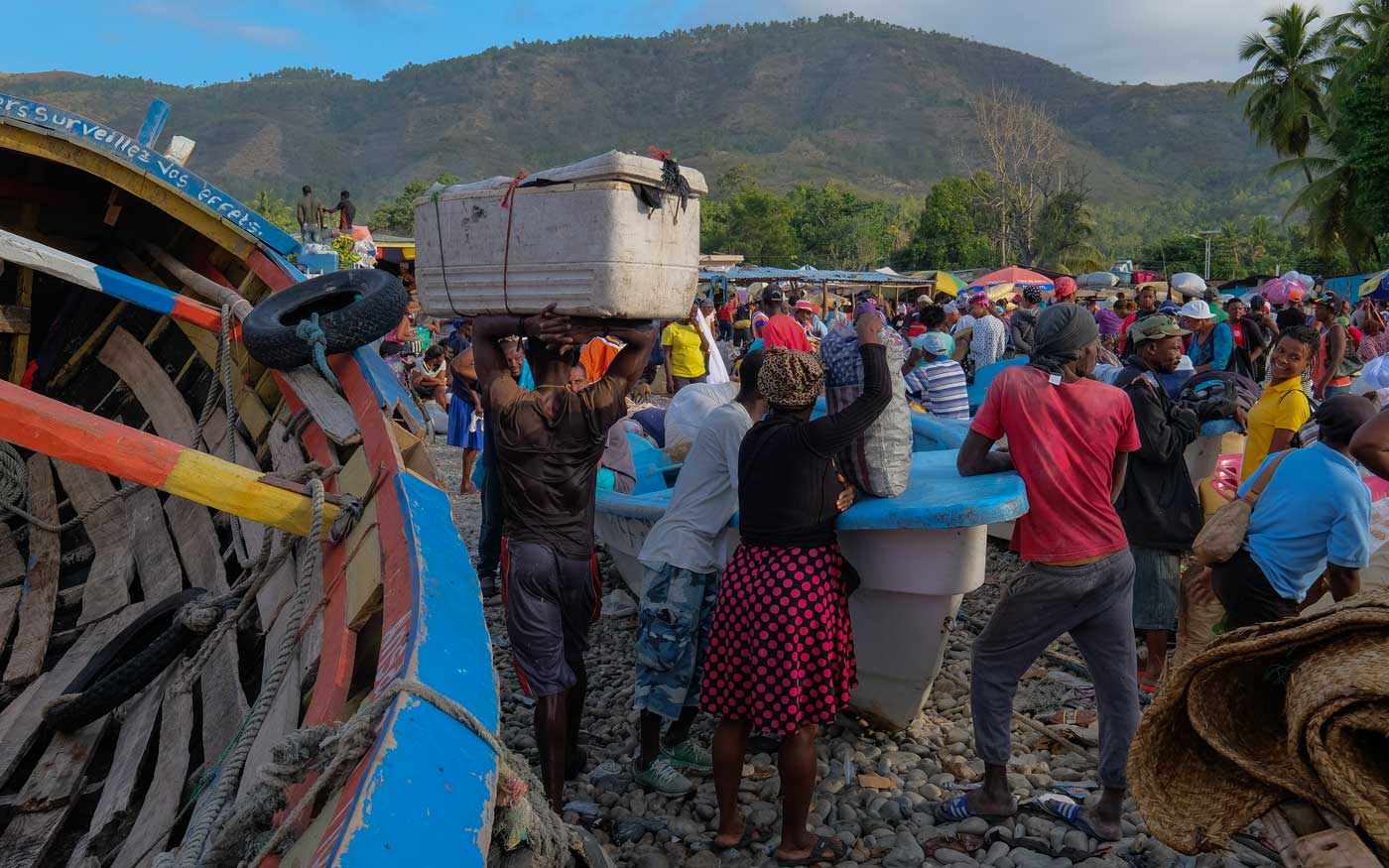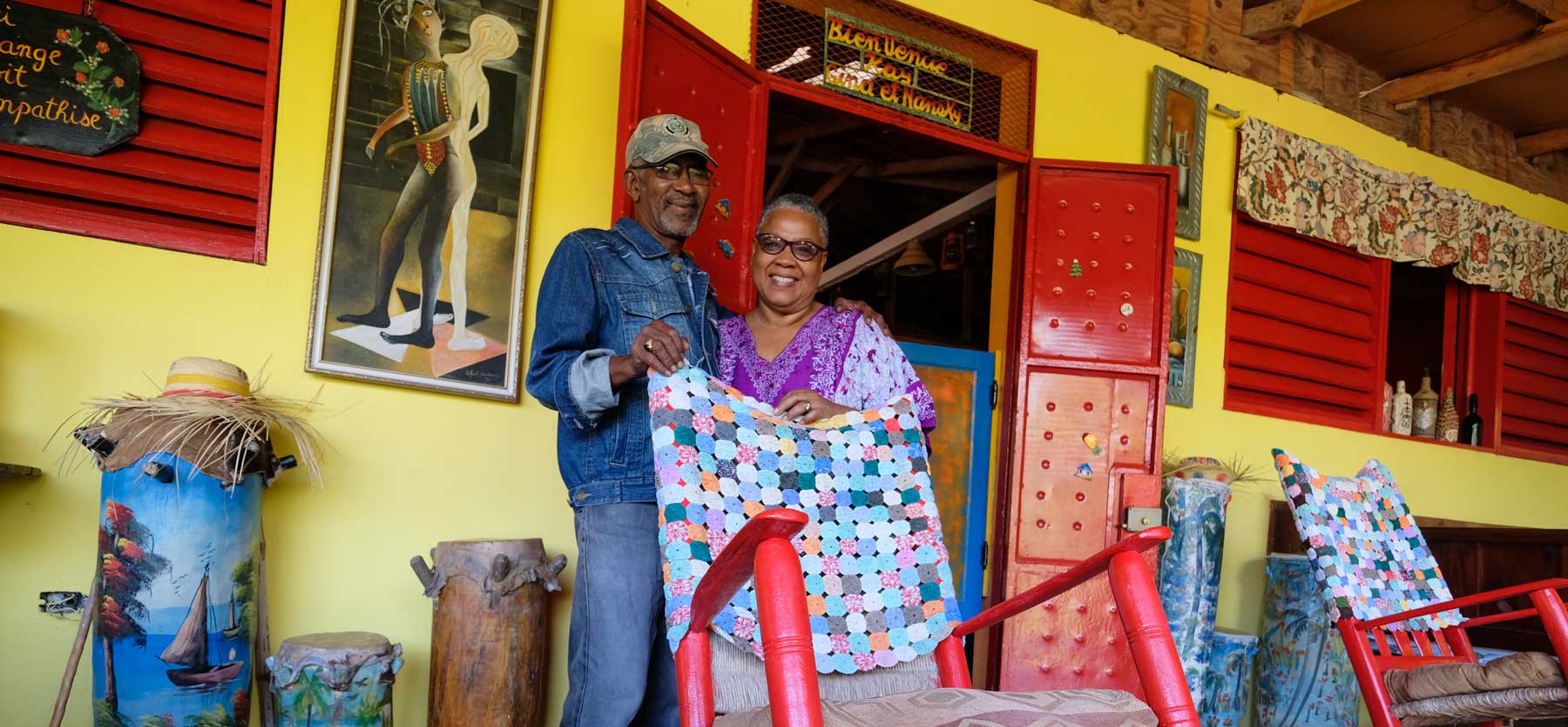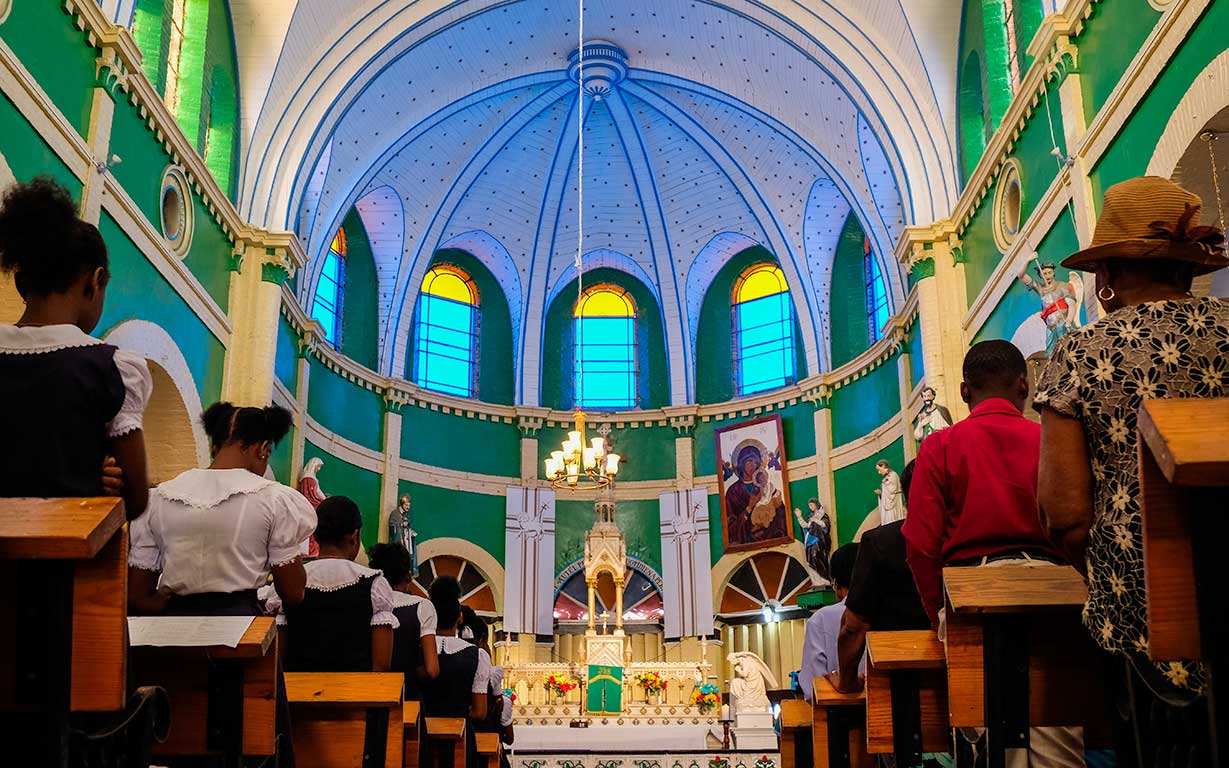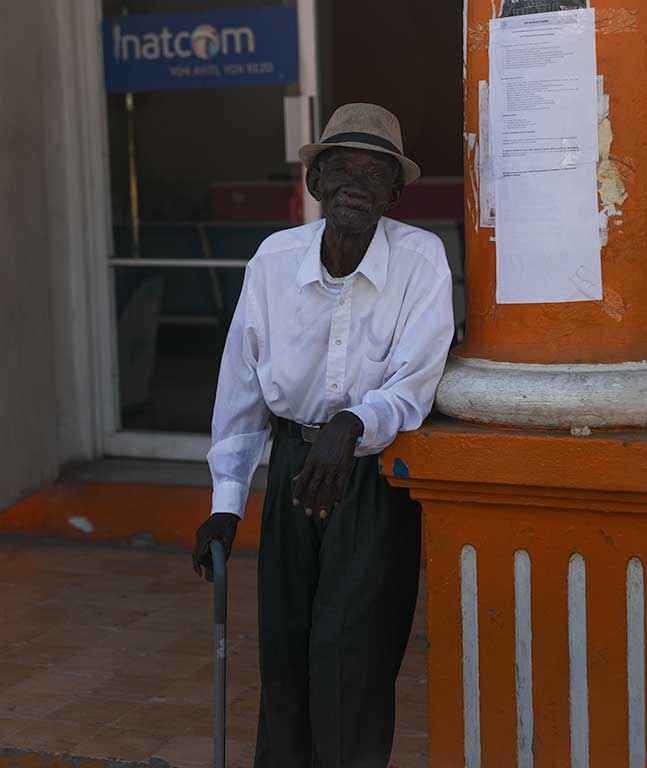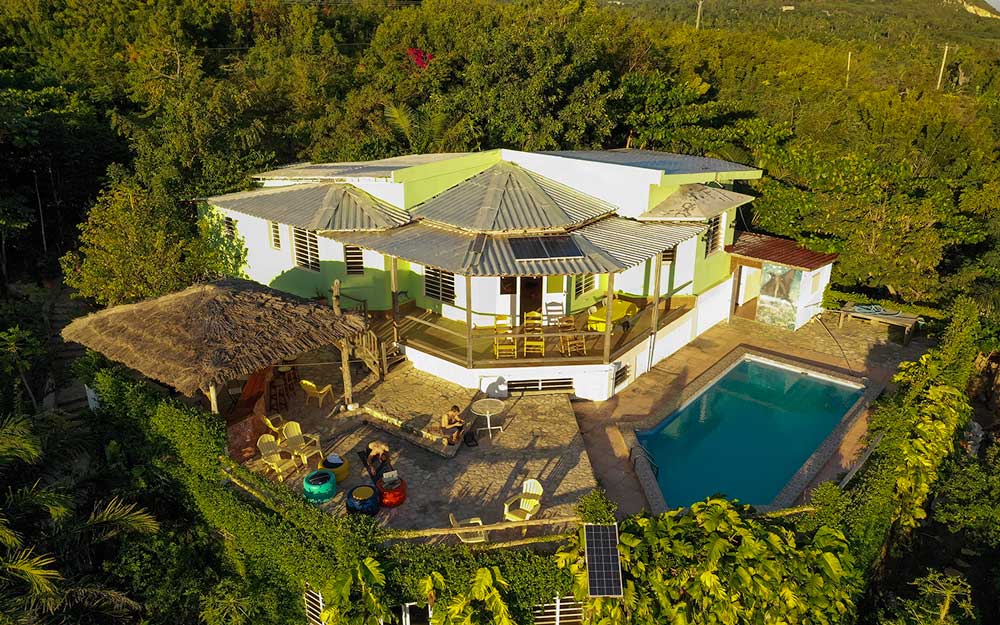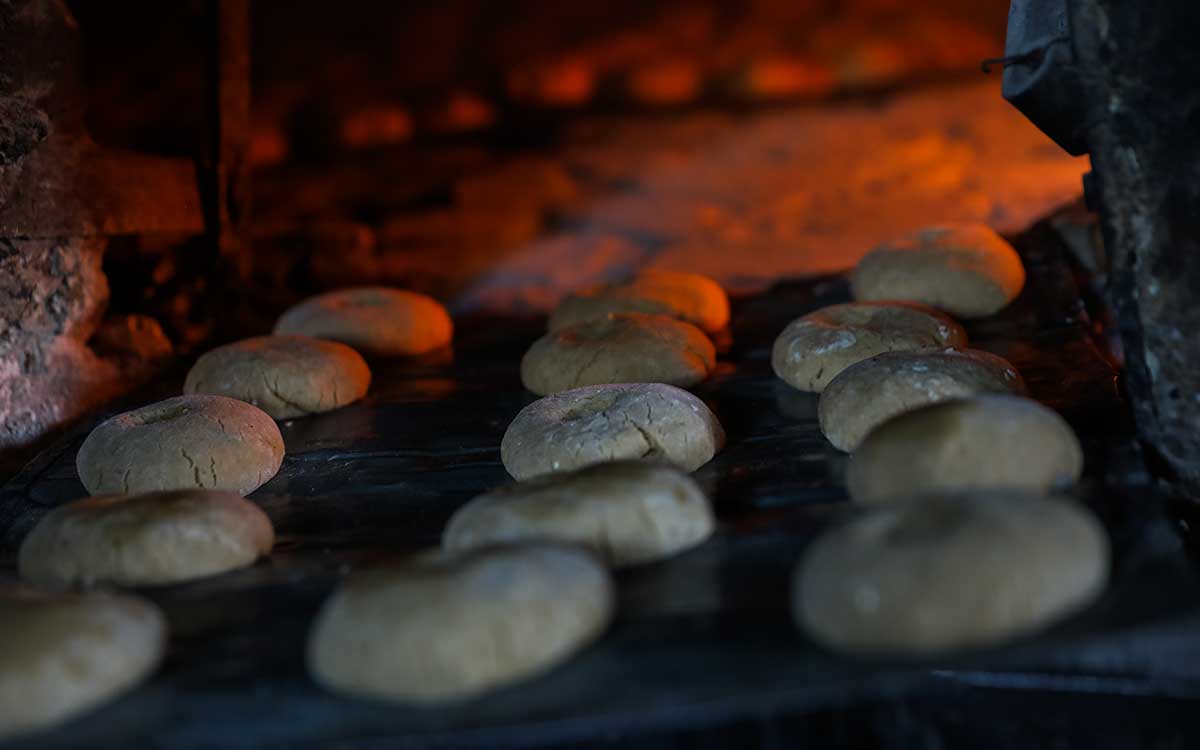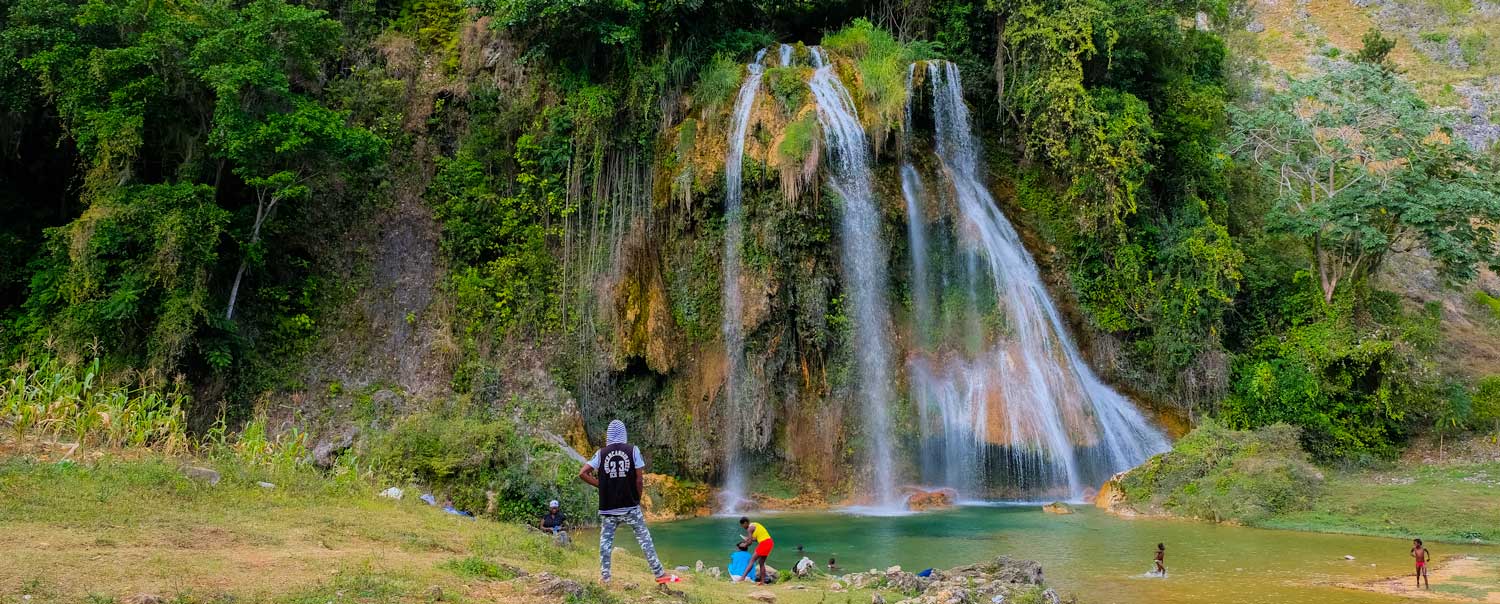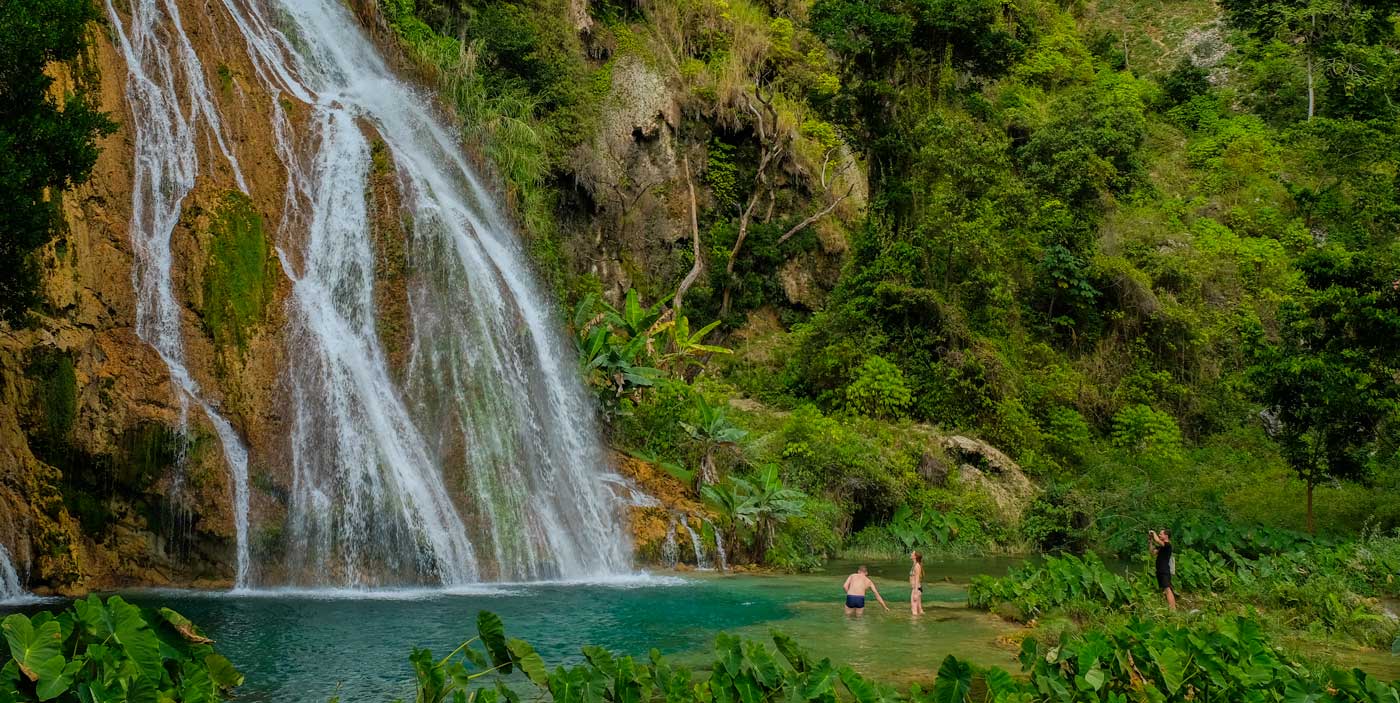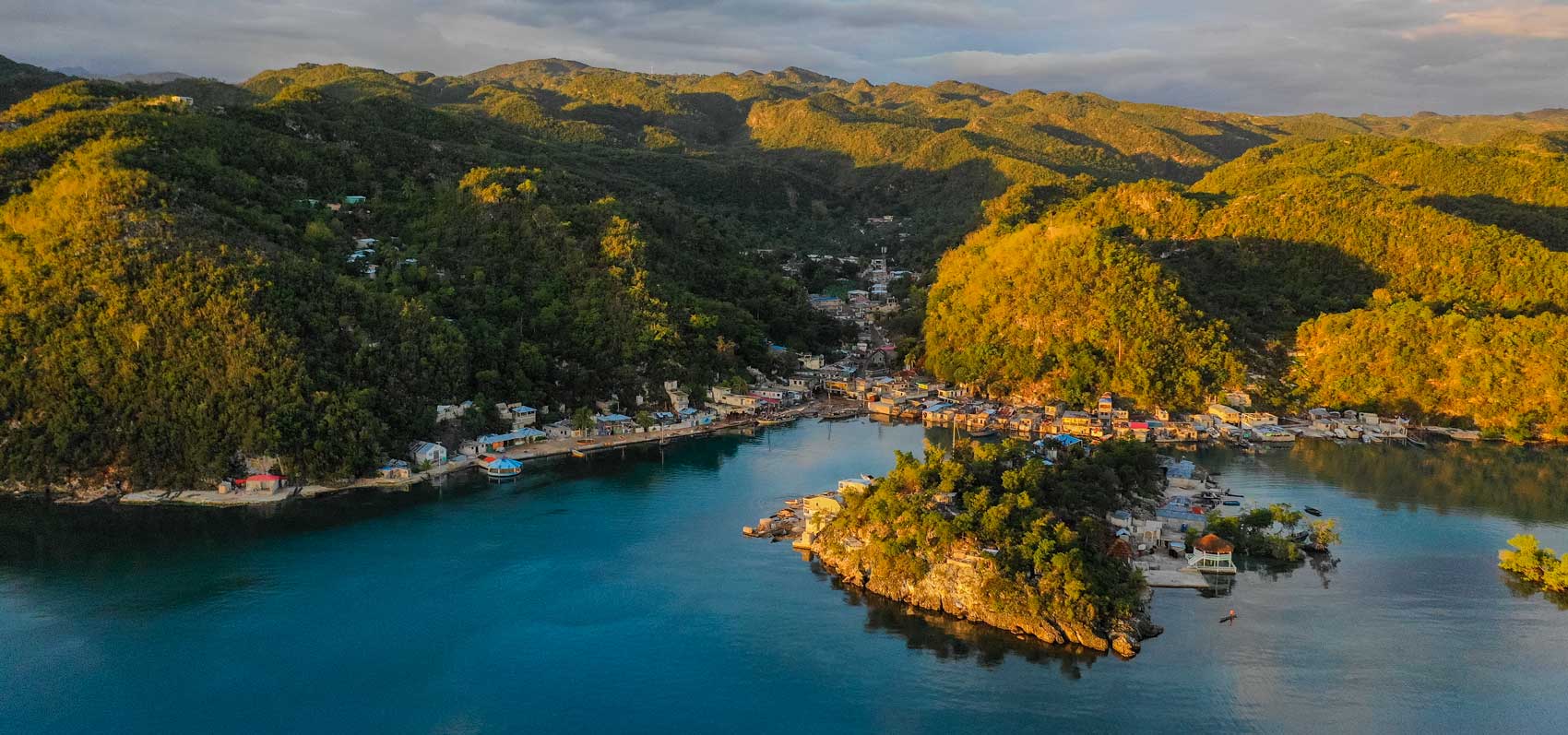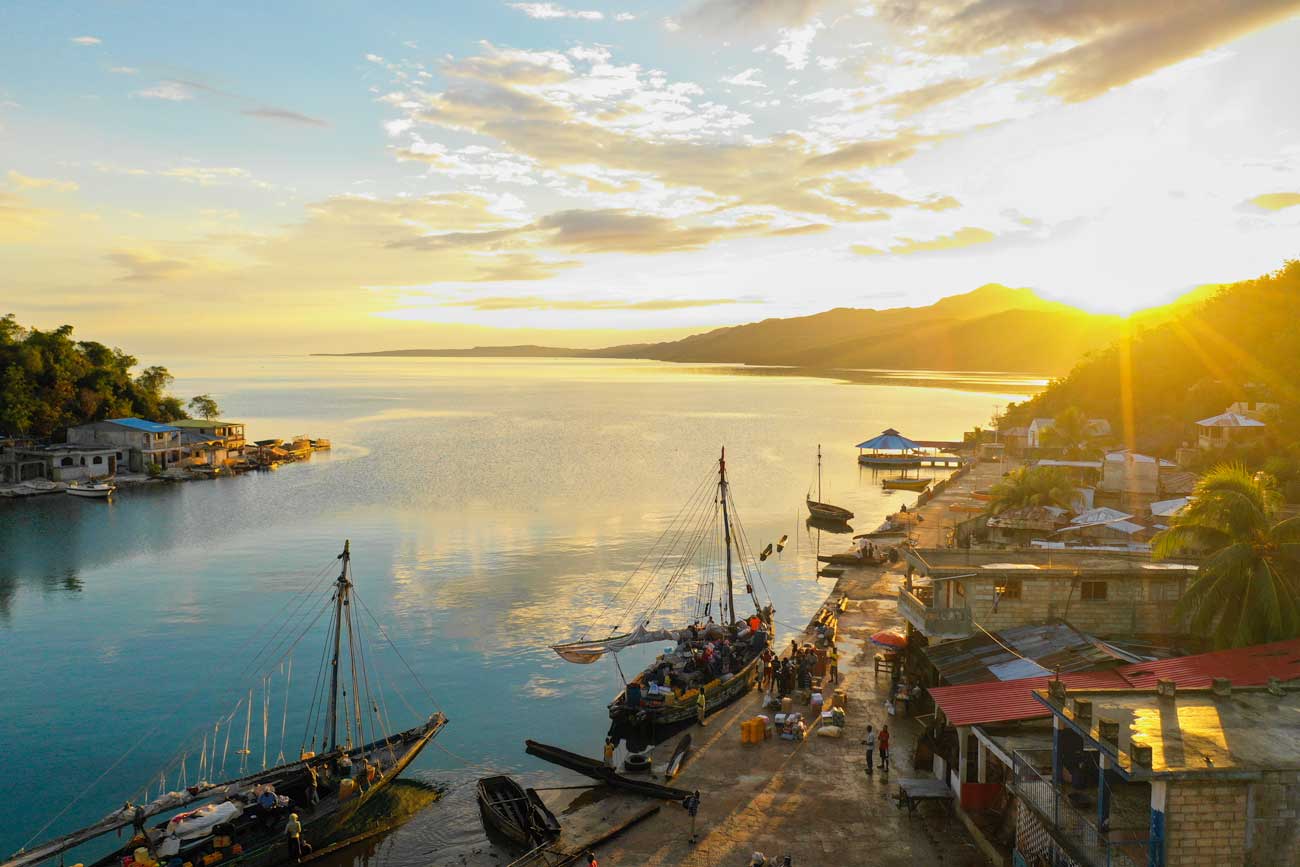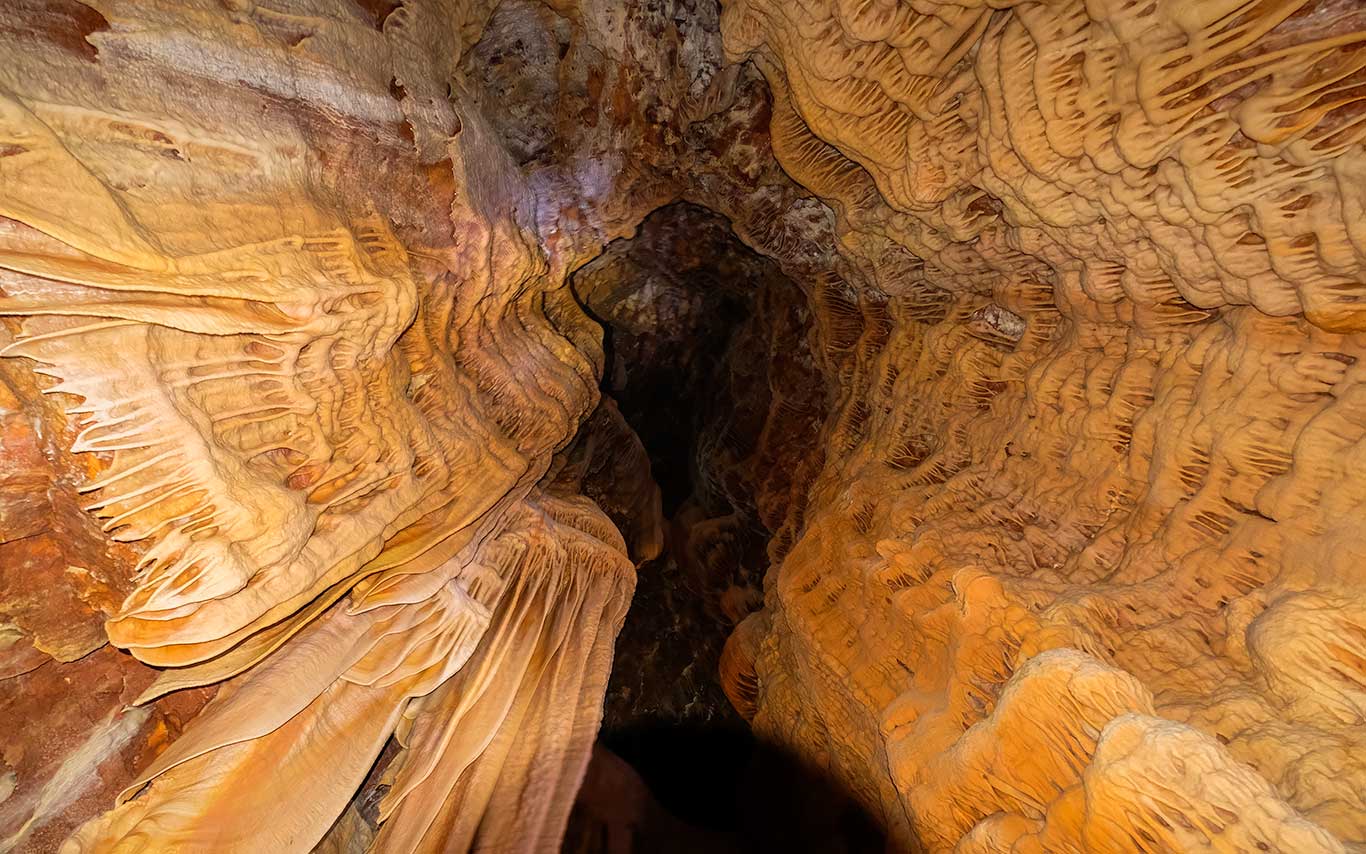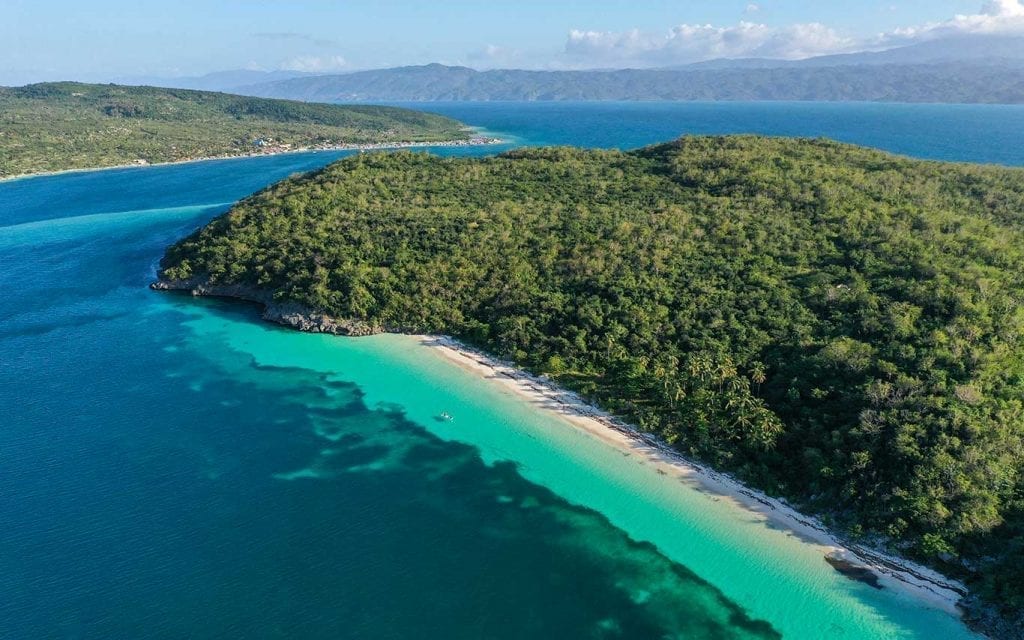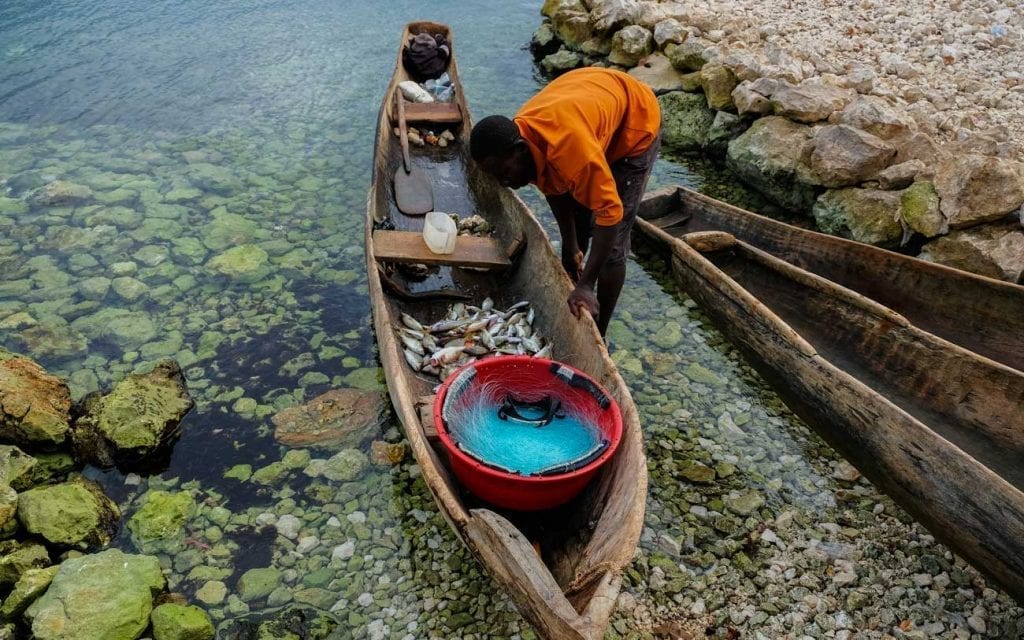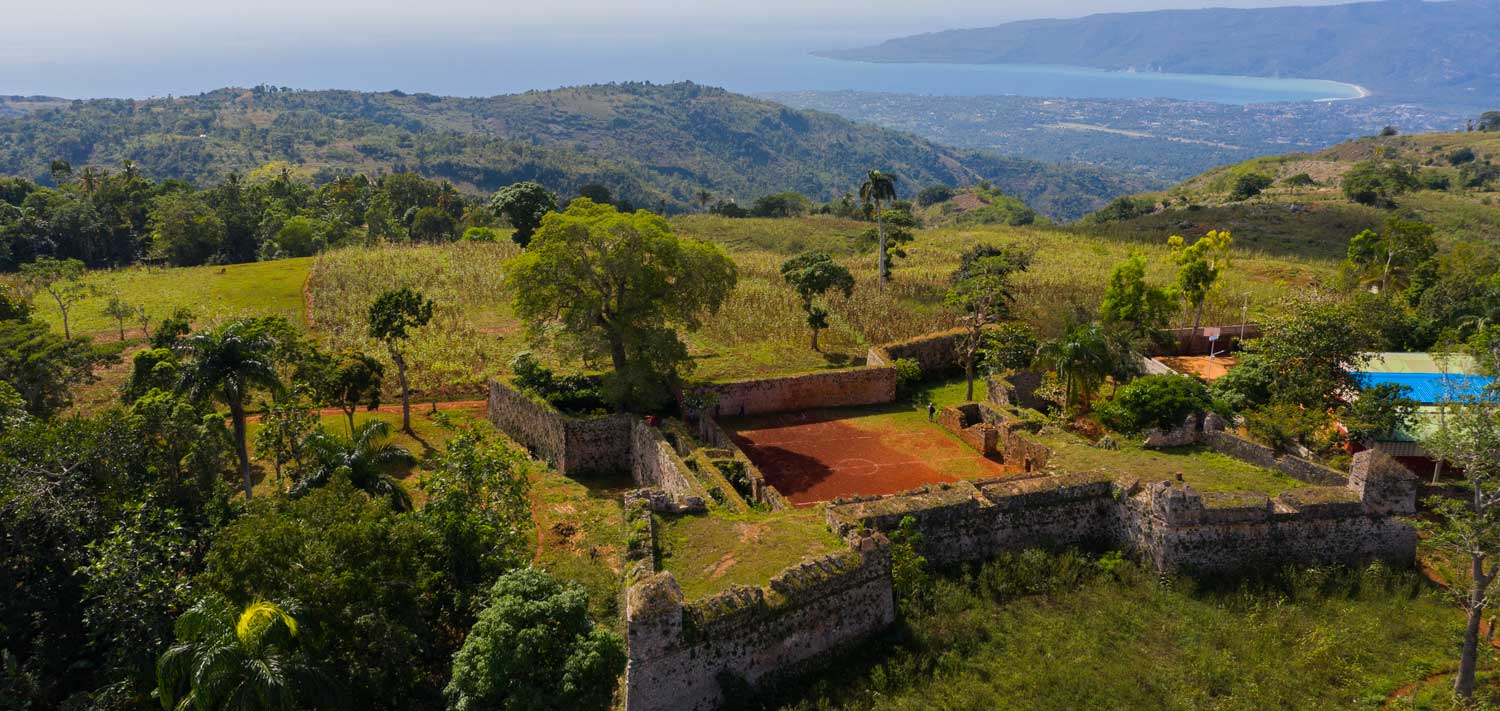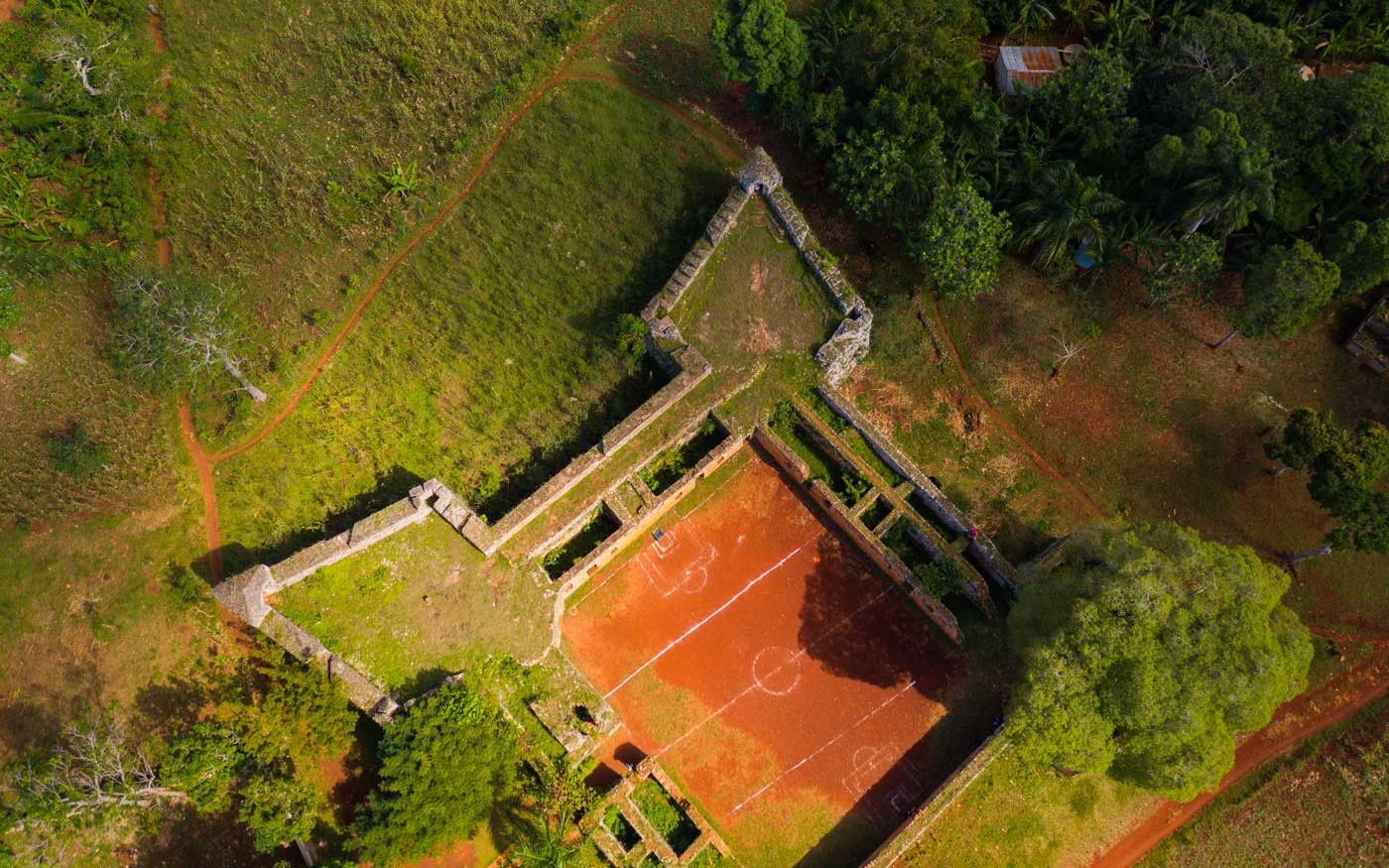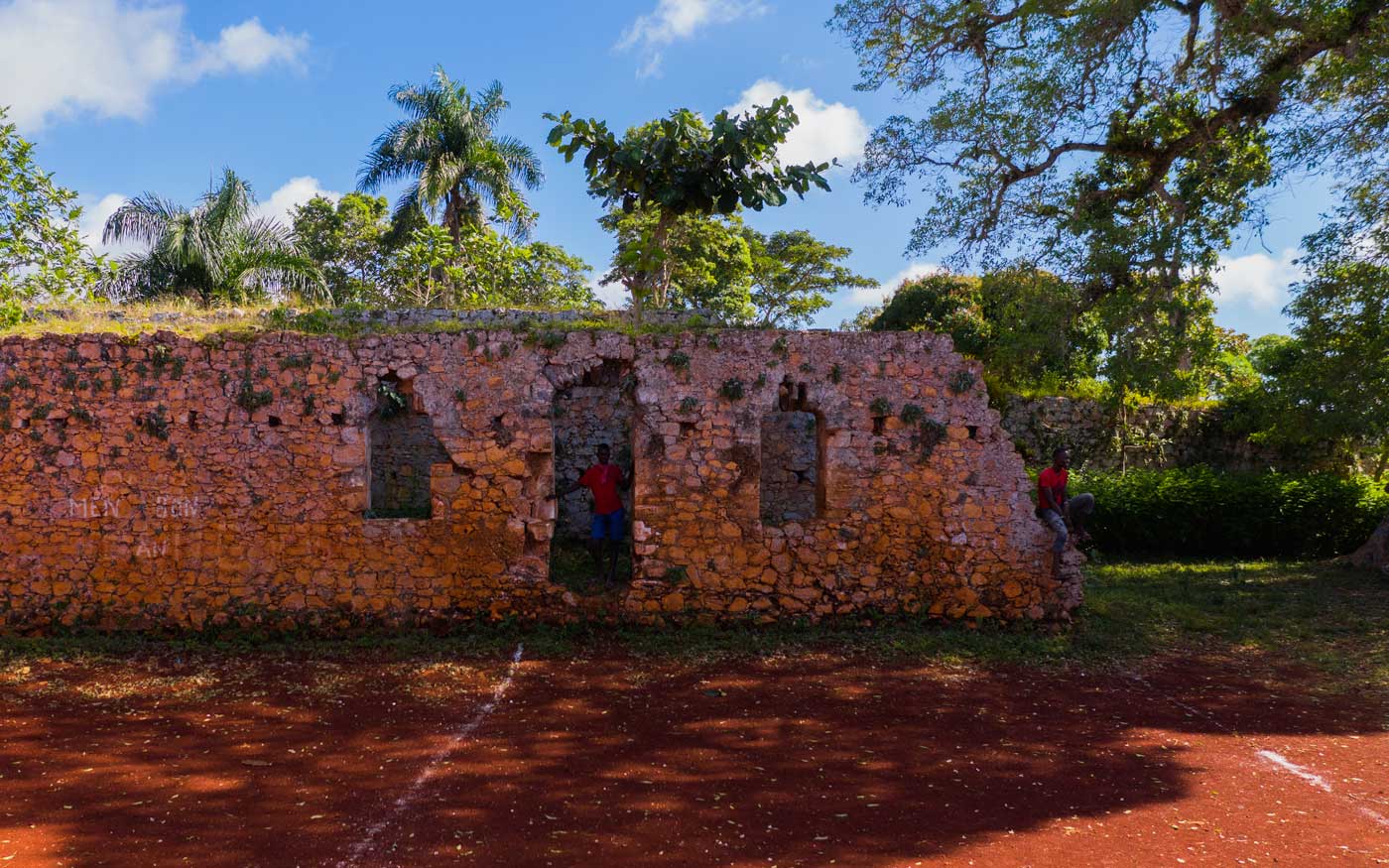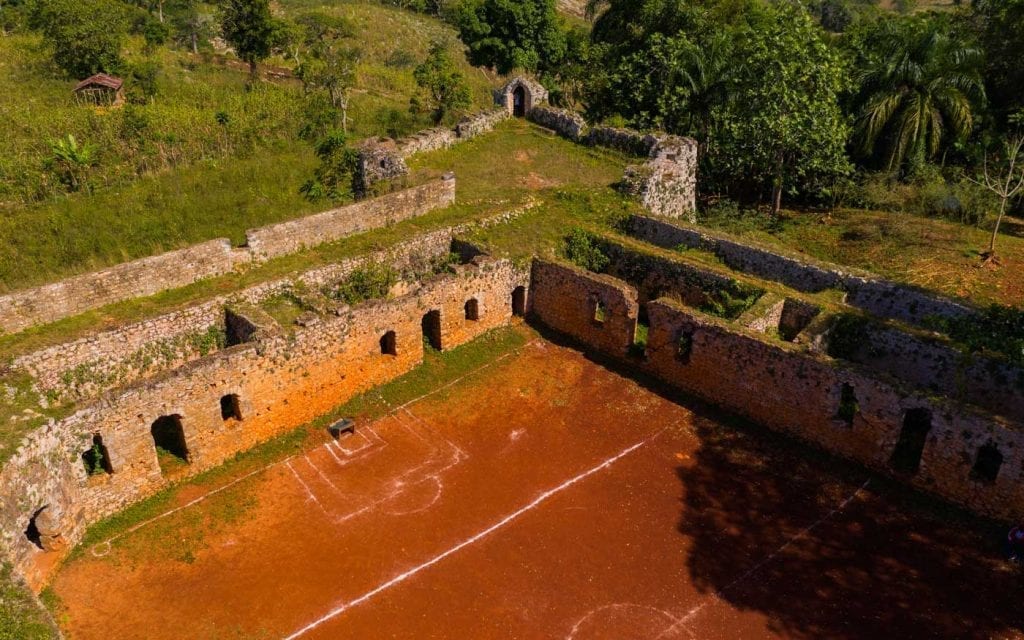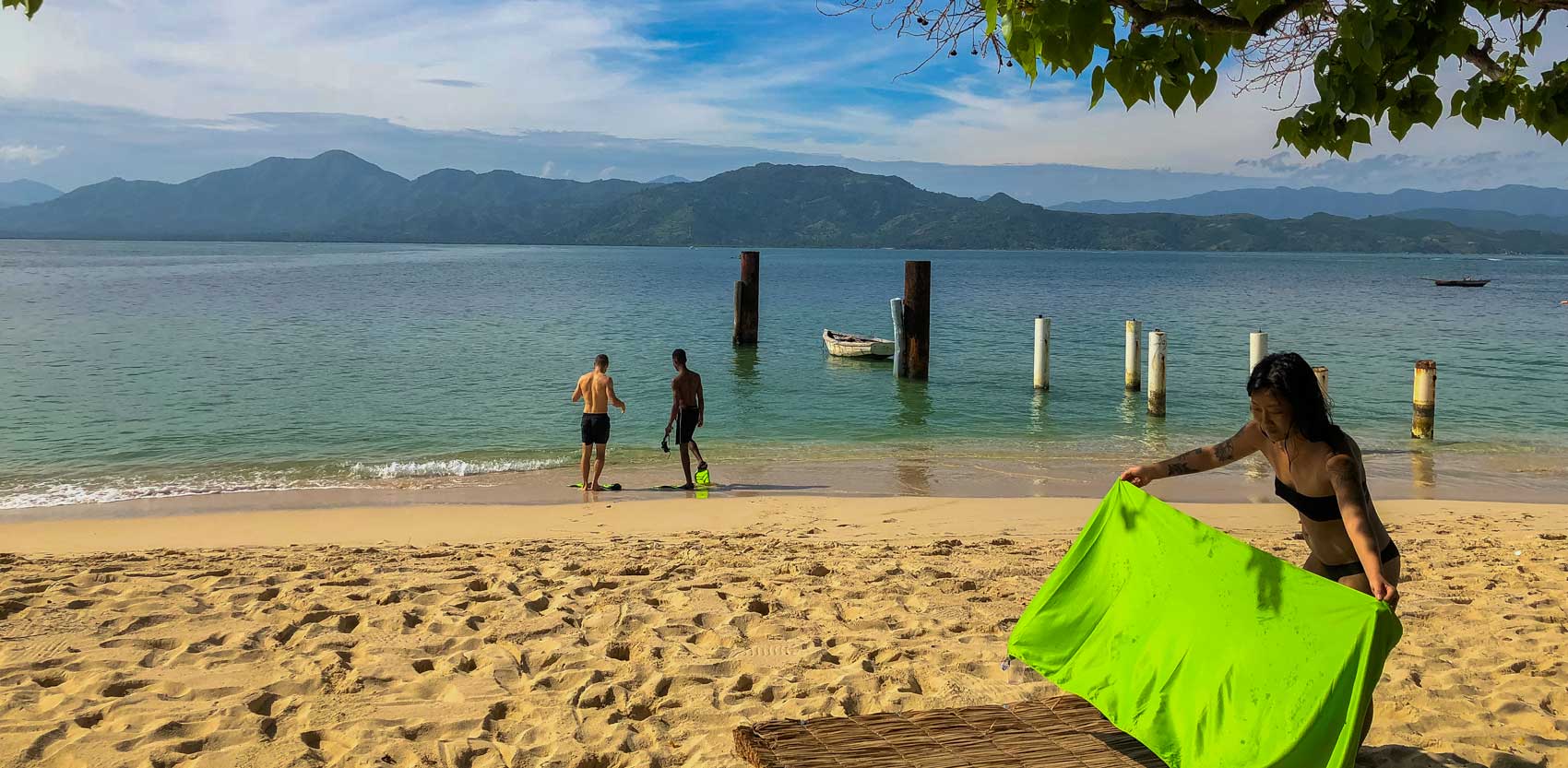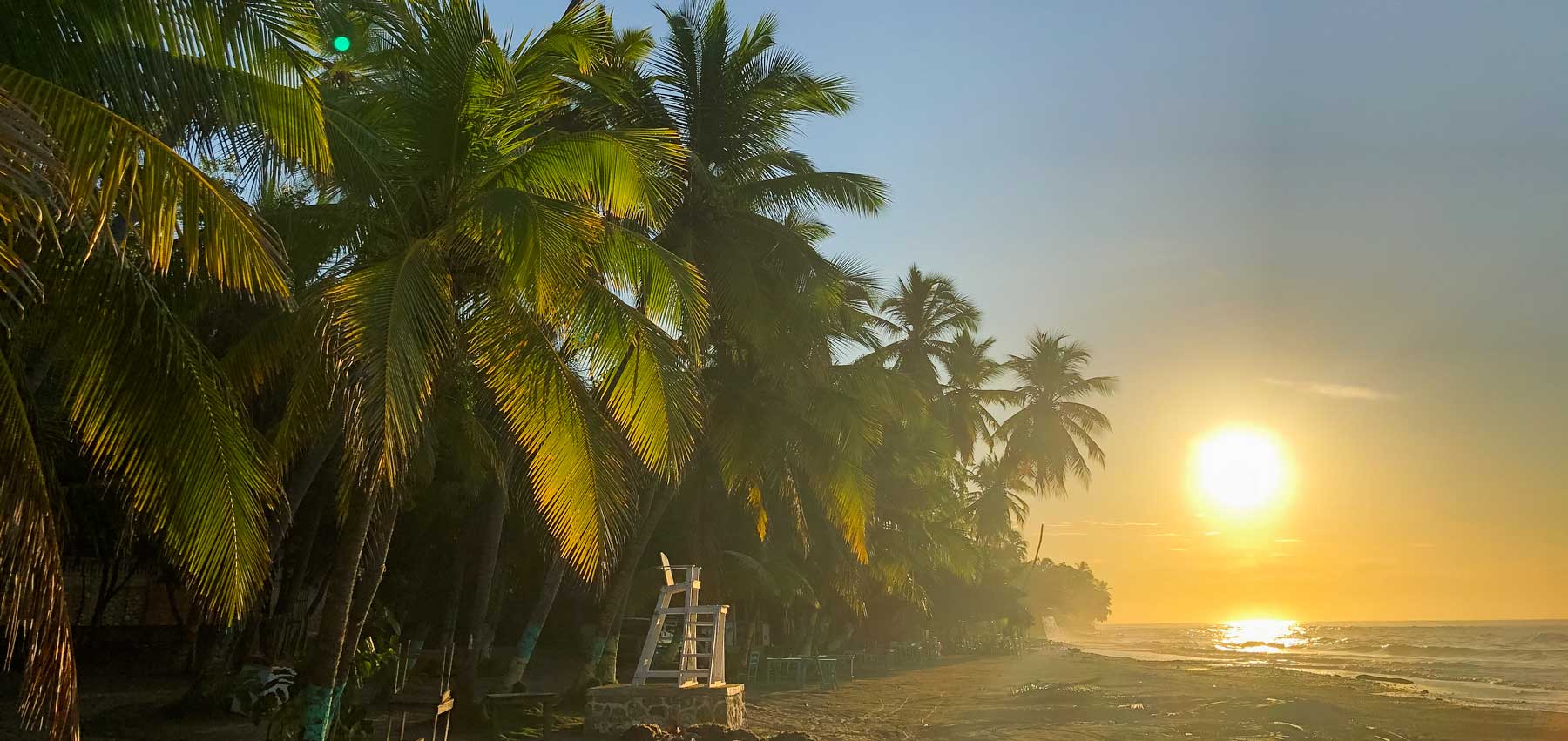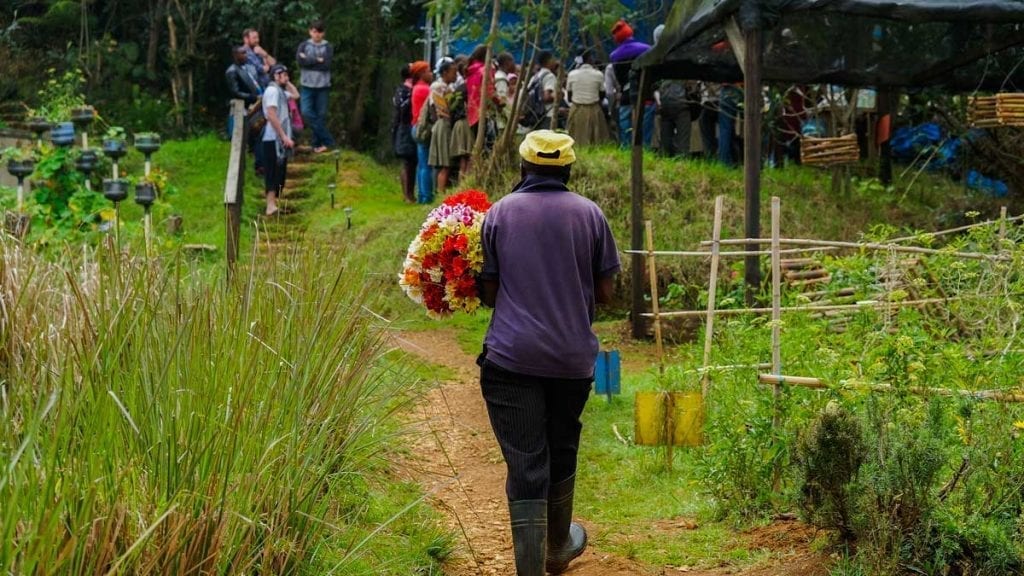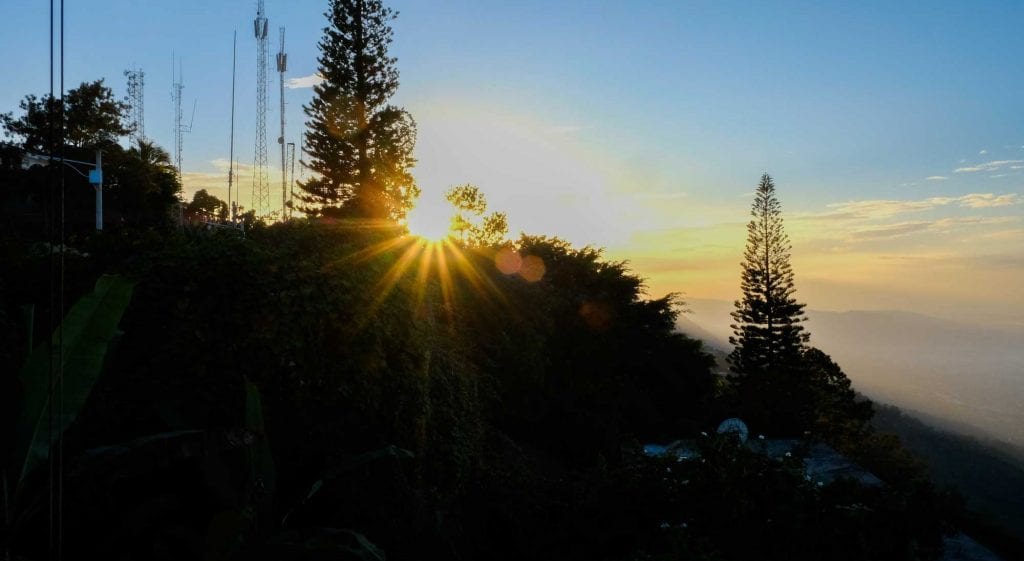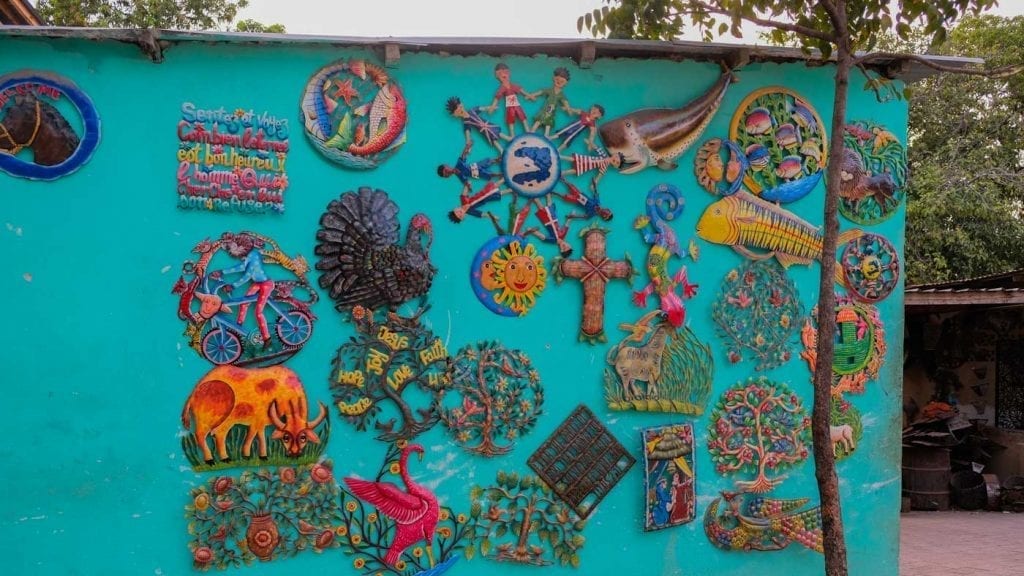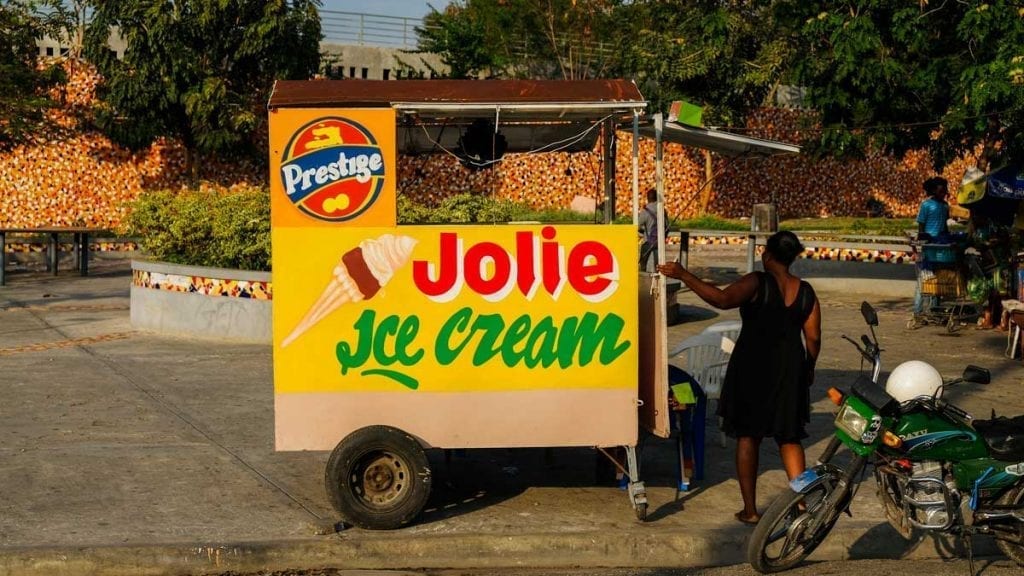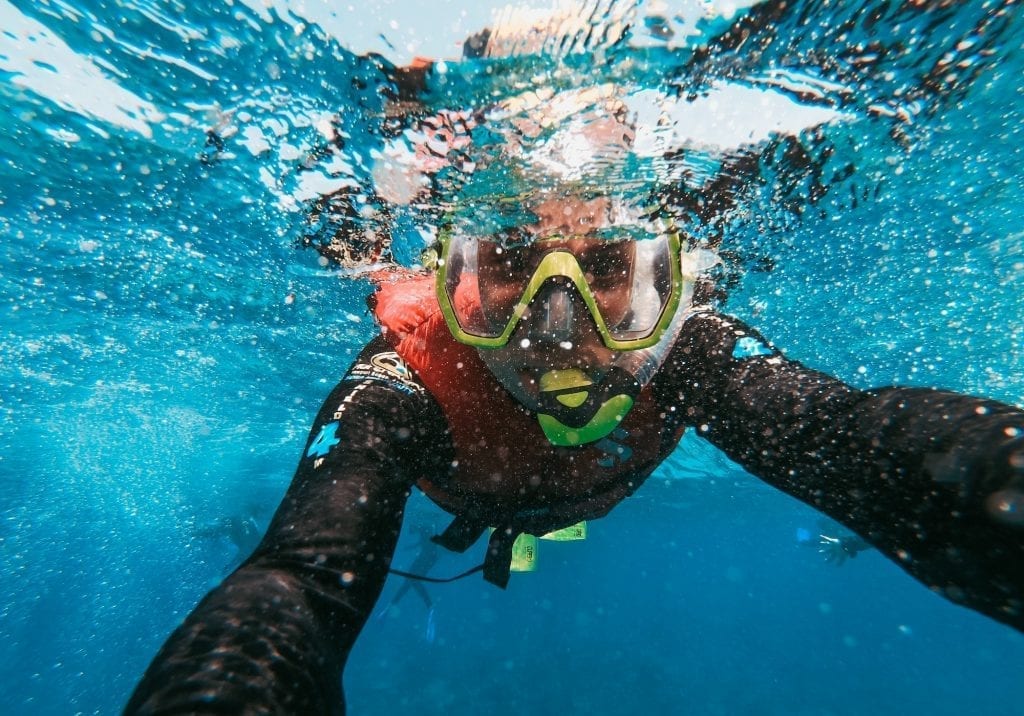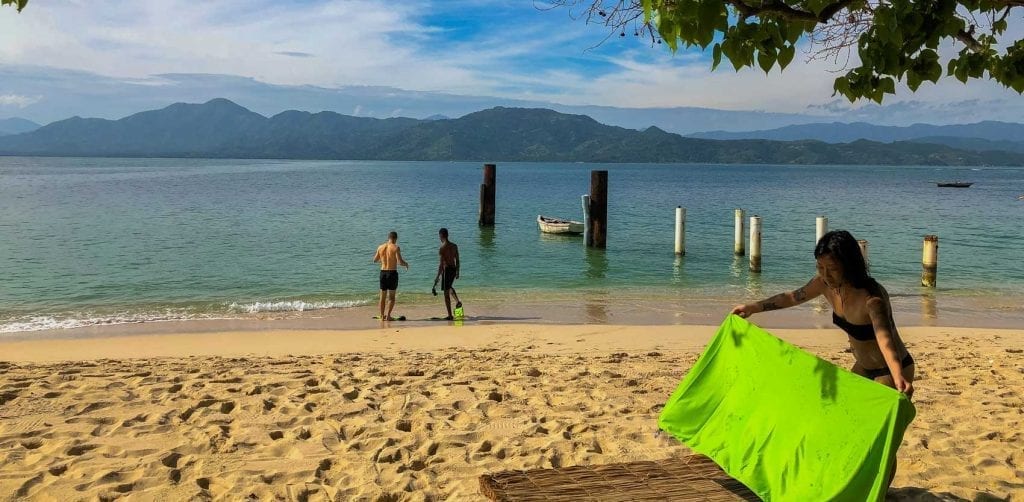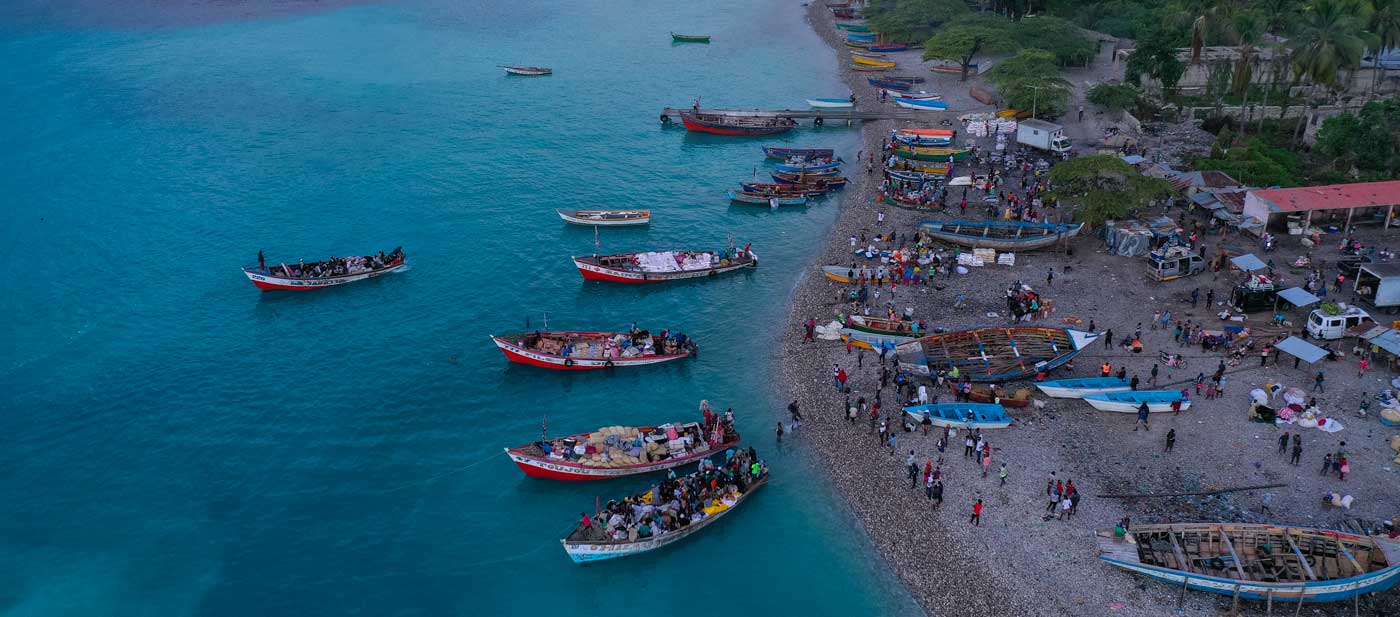
Photo: Franck Fontain
Photo Journal: Marigot
One hour east of the seaside city of Jacmel, the municipality of Marigot sits right between the edge of the water and an important element of everyday people’s lives.
Marigot’s farmers’ market is a salient feature of the village. An important pulse point, the market only operates on Saturdays. Boats arriving from Anse-à-Pitre dock at the port hours before the sun rises over the village.
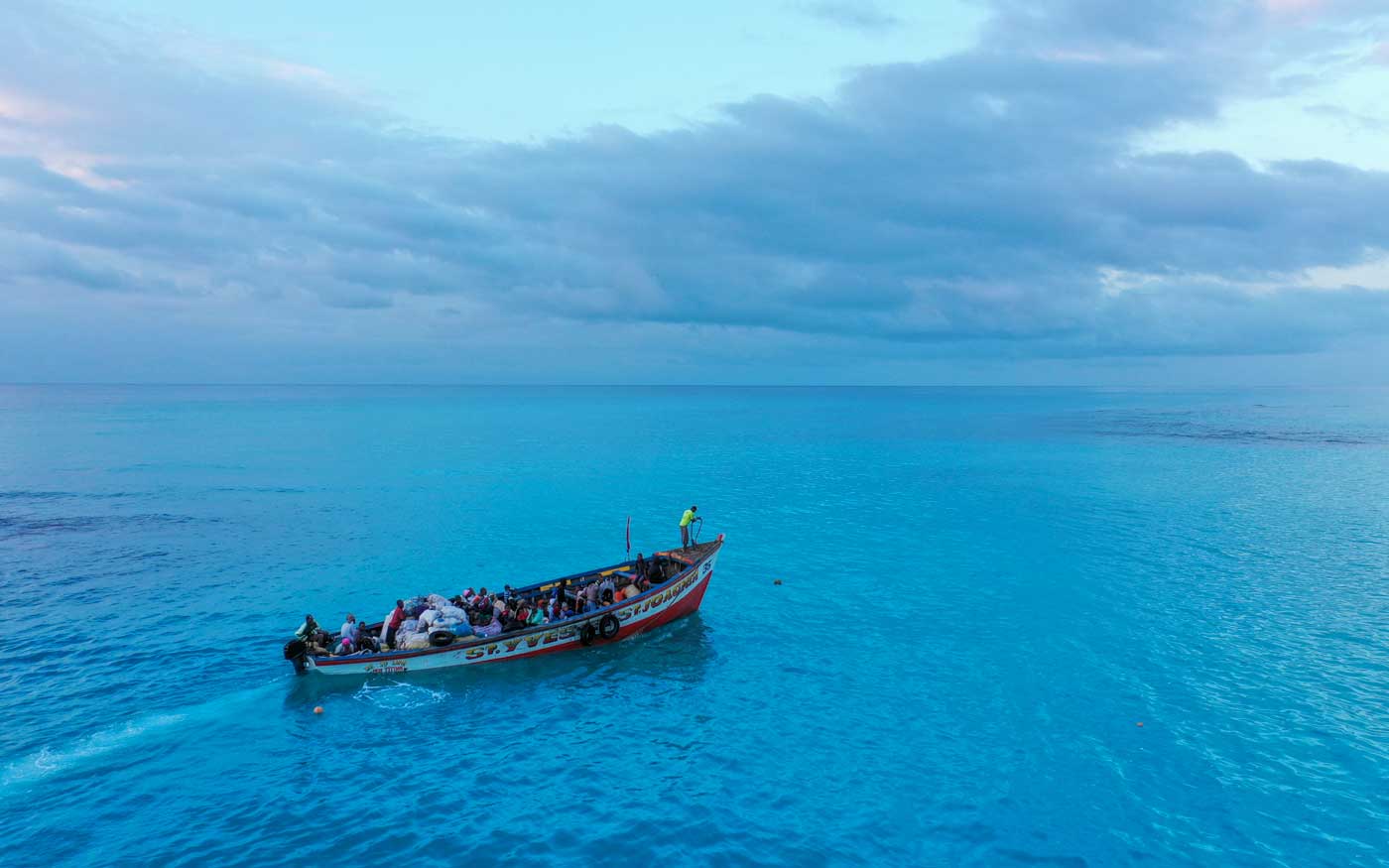
Photo: Franck Fontain
The boats are a great way to kill two birds with one stone. On the one hand, they carry goods to Marigot, and on the other, because road conditions are awful, they facilitate the transportation of passengers.
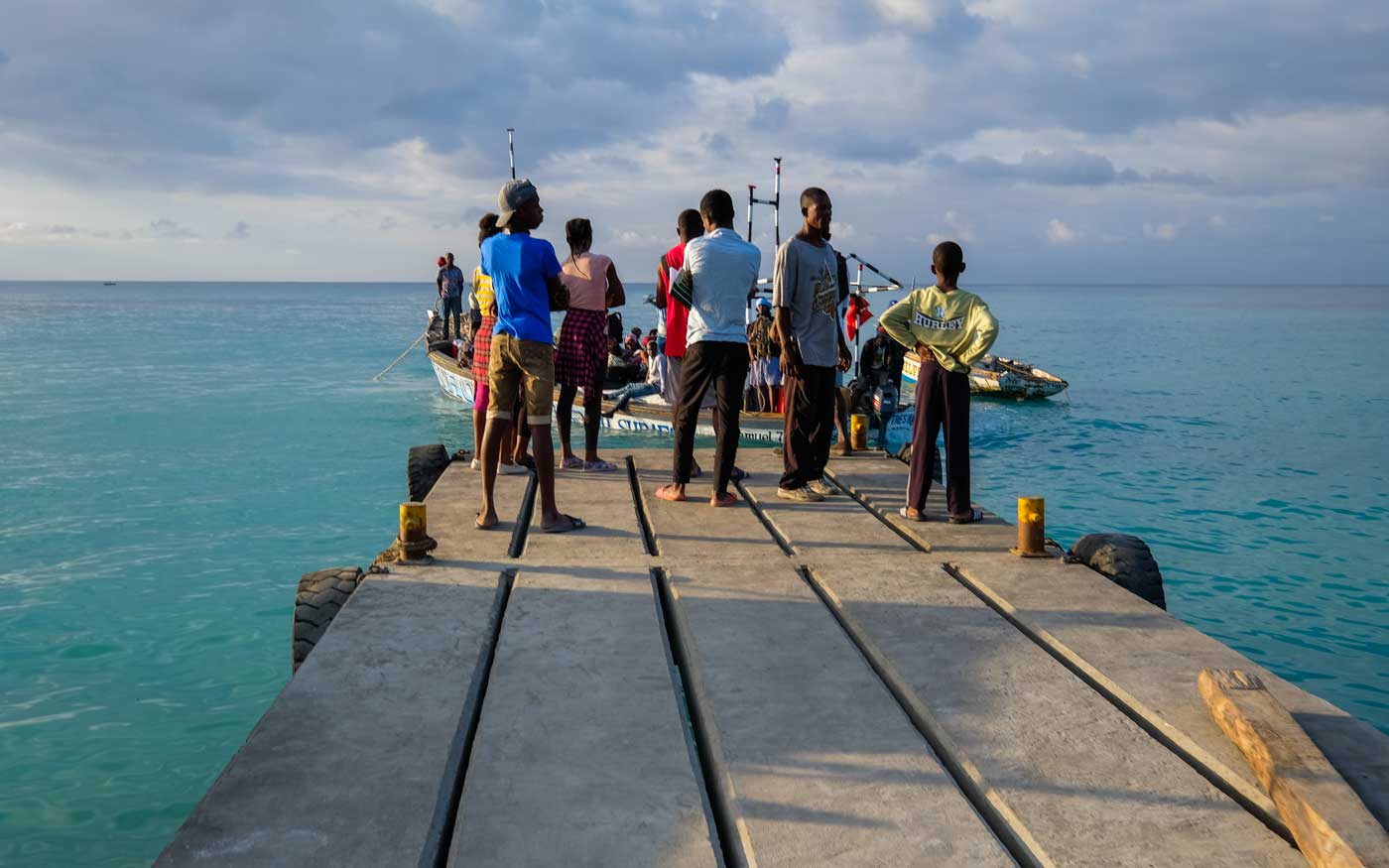
Photo: Franck Fontain
These boats carry people heading to or from places like Savane Zonbi, Thiotte, Anse-à-Pitres, or the Dominican Republic.
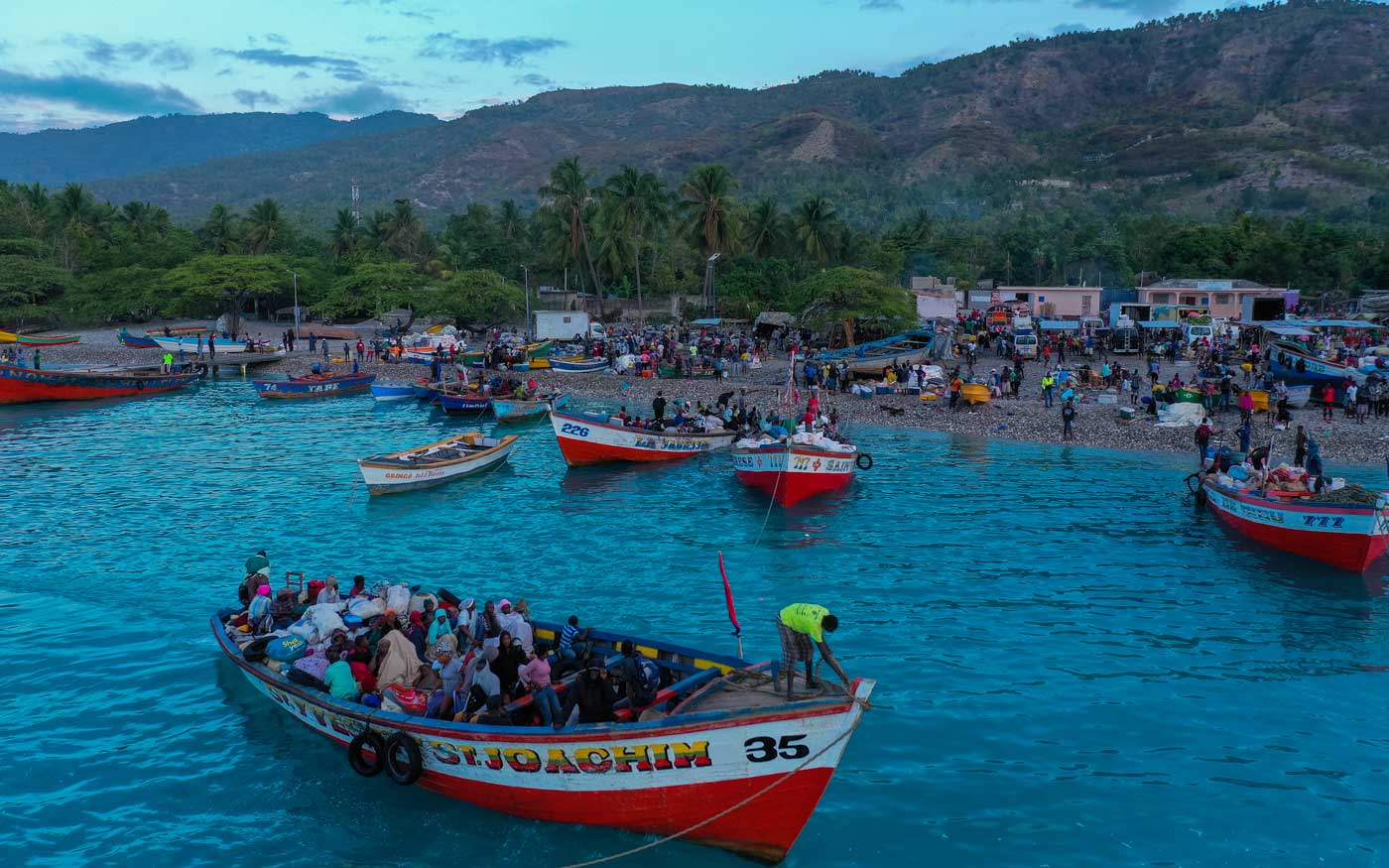
Photo: Franck Fontain
The scene at the port is both very Haitian and extremely picturesque. Nimble and hardworking men move packages off the boats and onto the docks.
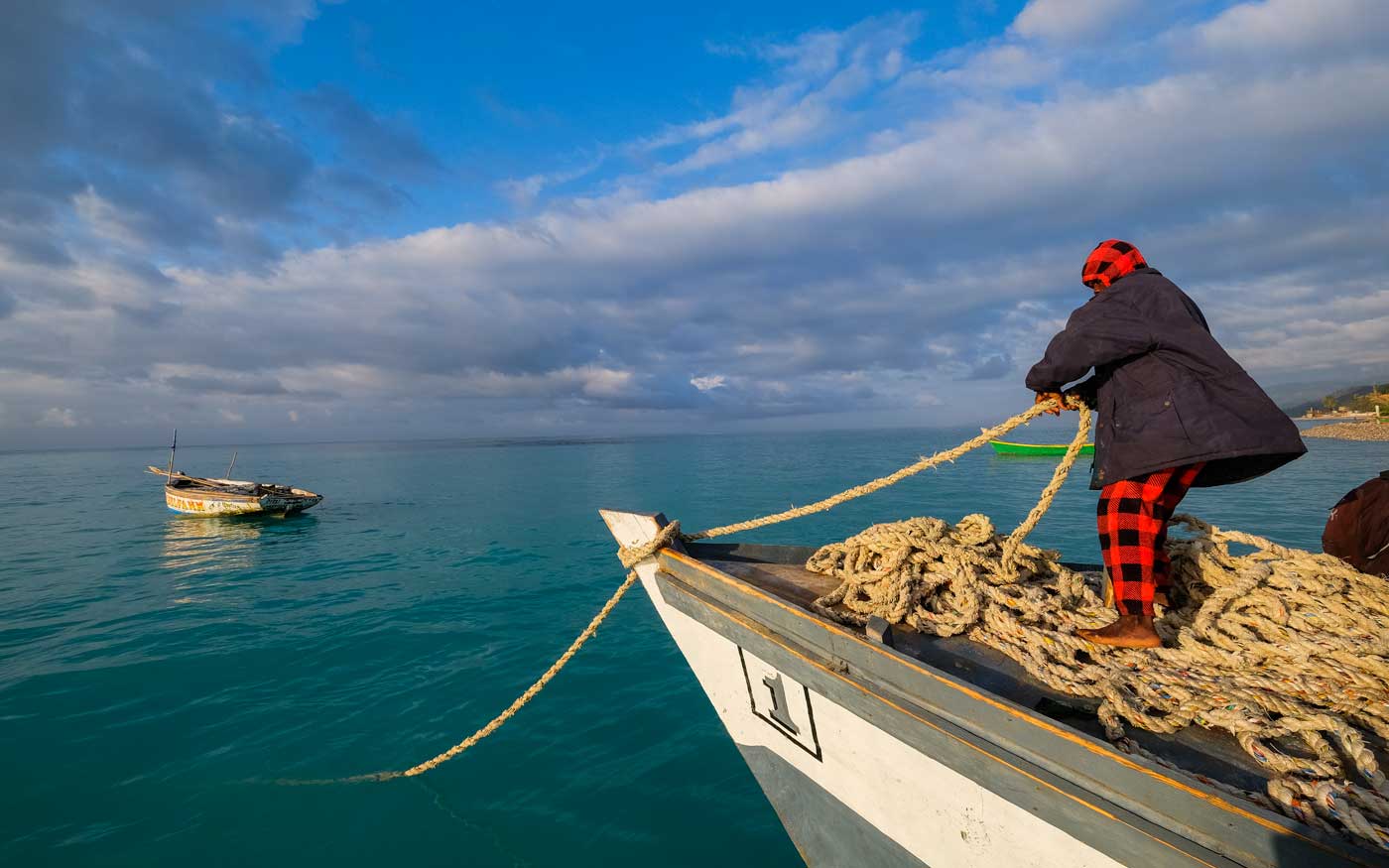
Photo: Franck Fontain
Wading through water up to their chests, they balance very large sacks of coal, heavy coolers stuffed with fish, and even stacks of packed cardboard boxes on their heads.
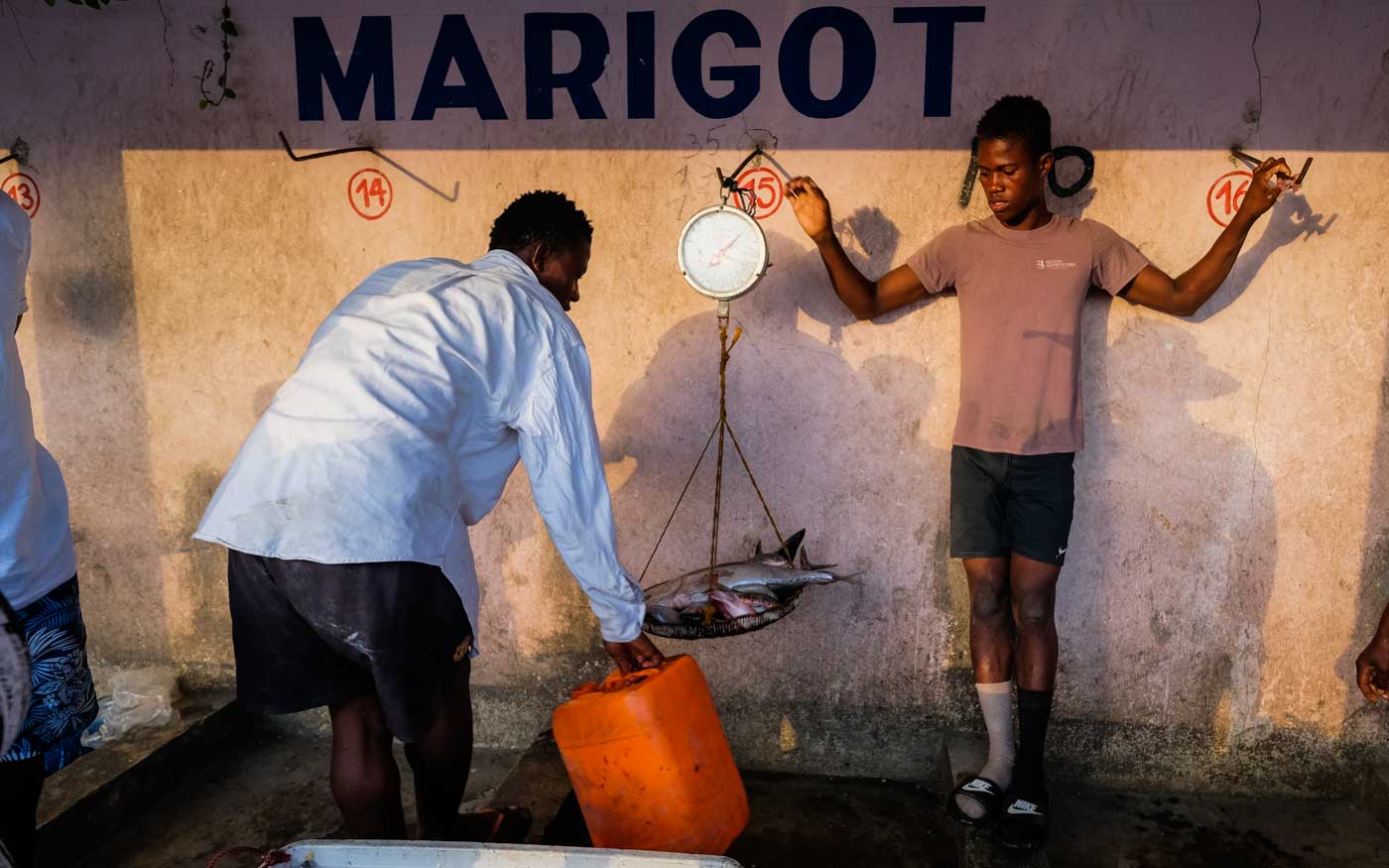
Photo: Franck Fontain
From the docks, all these packages are loaded onto trucks headed to other cities, but– careful! These workers move fast, and need you to be out of their way. There’s no time to waste!
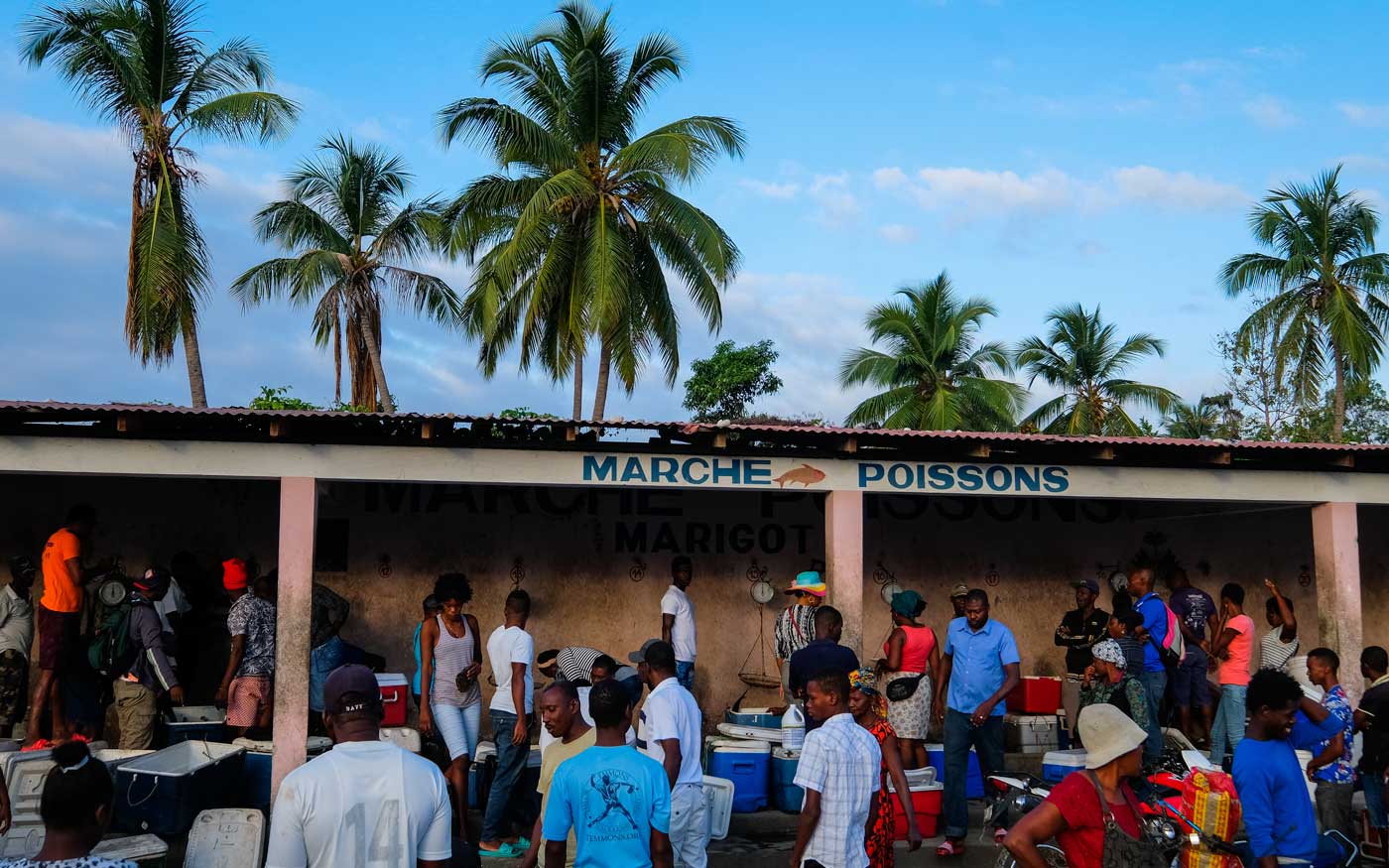
Photo: Franck Fontain
The coolers of fish are taken to the nearby fish market; an open building located just a short walk from the wharf. This is where fish is weighed and priced.
People unloading goods from the boats
Photo: Franck Fontain
As any farmers’ market in Haiti, haggling is a must, and commotion is everywhere; from fish vendors to other merchants crisscrossing the building.
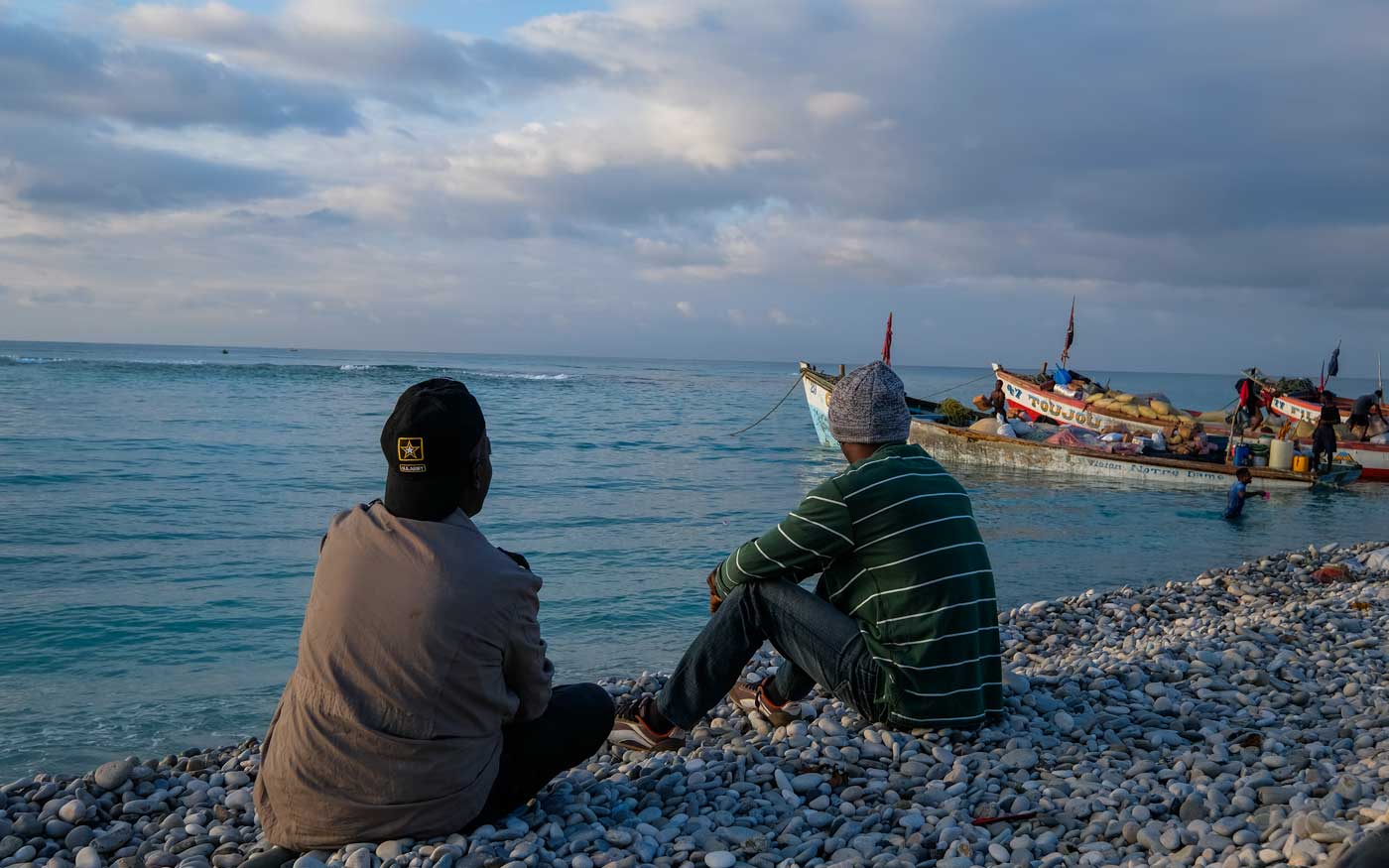
Photo: Franck Fontain
Large amounts of fish and seafood in Marigot regularly make their way to plates in Port-au-Prince, as middlemen come to stock up for the capital’s restaurants every week.
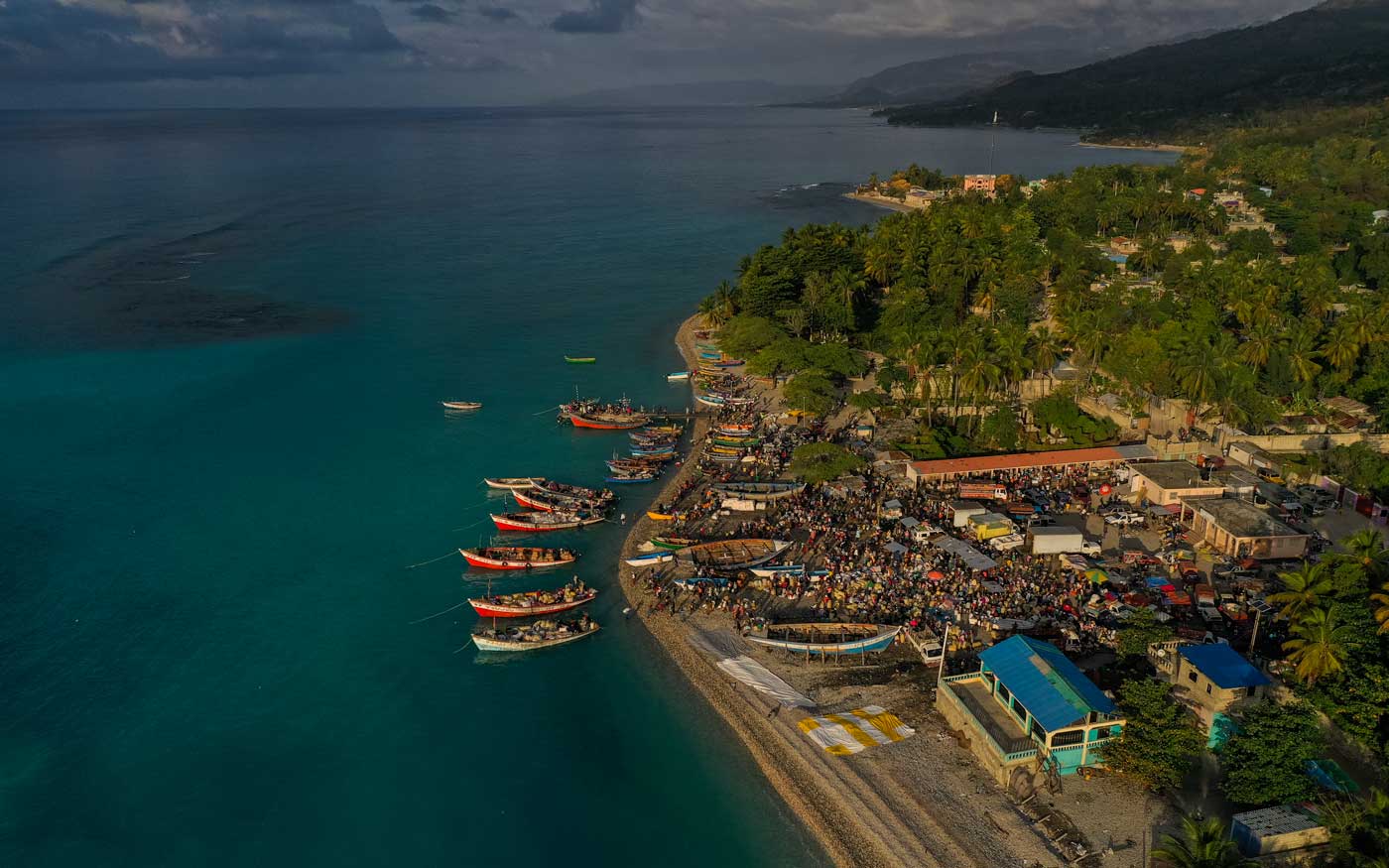
Photo: Franck Fontain
Explore Haiti’s Art & Culture

Paradise for your inbox
Your monthly ticket to Haiti awaits! Get first-hand travel tips, the latest news, and inspiring stories delivered straight to your inbox—no spam, just paradise.

